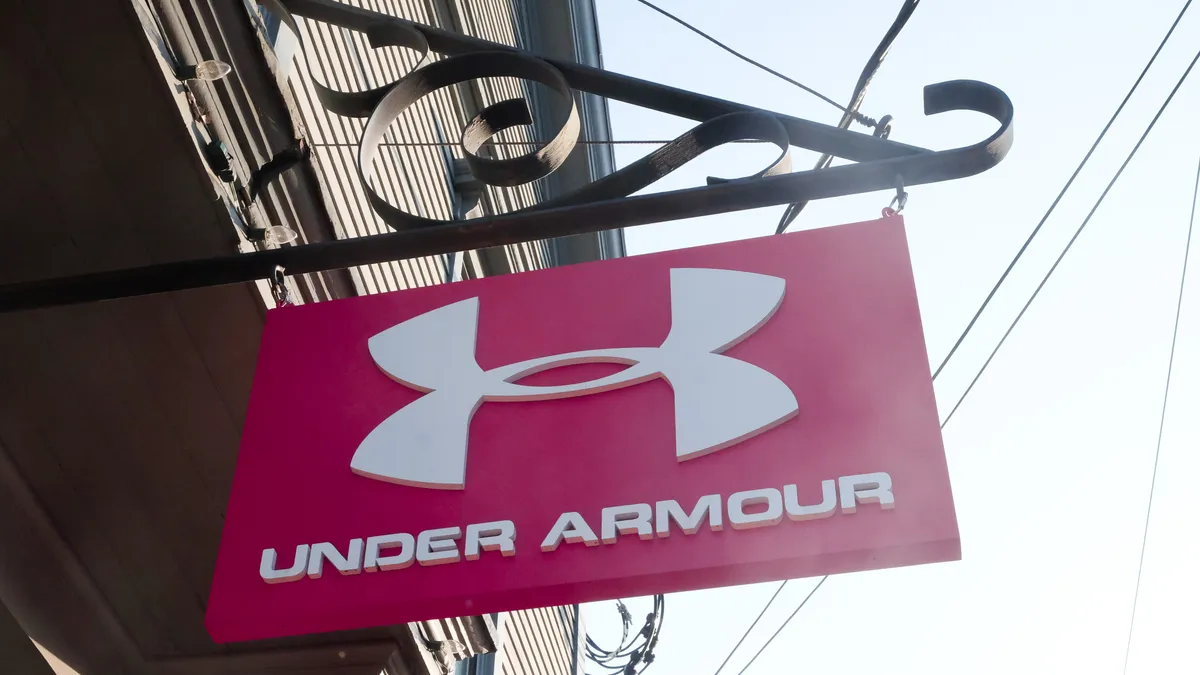Dive Brief:
-
Under Armour bounced back sharply from the debilitating lows of the second quarter last year, with revenue up 91% to $1.35 billion (also up 13% against 2019). CEO Patrik Frisk highlighted on a call with analysts that North American revenue was up 11% against 2019, and up 3% for the first half of the year.
-
In comparing 2021 to 2019, Frisk noted the company has since seen a "significant increase in DTC" and "considerably lower" wholesale sales, as part of its strategy to adopt a more DTC-focused model. Both channels were up greatly over 2020, with wholesale growing 157% and DTC increasing 52%, the latter mostly thanks to its own stores as e-commerce fell 18%.
-
Executives also discussed the worsening impact of COVID in "key sourcing countries," including Vietnam, which could continue to hit the brand going forward. "It's a developing situation and I think it's something that we're all dealing with," Frisk said, though he also said the company has diversified its sourcing and is "not reliant necessarily" on the Asian Pacific region.
Dive Insight:
Under Armour's second quarter was largely one of broad-based recovery from a year ago, and results that Frisk said "continue to validate that our multi-year transformation is working." However, the company is also up against a quarter last year that saw significant revenue decreases.
"Given that Under Armour's revenue collapsed by 41% in the second quarter of last year, it is unsurprising that the company has rebounded strongly as pandemic restrictions and complications fade," GlobalData Managing Director Neil Saunders said in emailed comments. "However, total sales growth of 91% represents impressive momentum, and puts Under Armour 13% or $160 million up over the same period of 2019. That the two-year growth rate is better than the 4% uplift of the first quarter shows pleasing progress."
Under Armour certainly sees it that way. Frisk noted that the company has seen improved traffic and higher average selling prices, is reinvesting some of its profits into marketing initiatives to drive further connection with its customers and has been "earning back space with key North American wholesale partners." Improving its operating model is also allowing the retailer to drive greater profitability and position Under Armour as a premium brand. That work continues in Q3, when Under Armour expects to exit undifferentiated retail partners and double down on DTC.
In light of all the improvements, the retailer increased its guidance, raising its expectations for operating income by over $100 million and projecting revenue growth will be up in the low 20% range compared to previous expectations of an increase in the high teens. The question, as Saunders put it, is how sustainable Under Armour's growth is, and how much the retailer is benefiting from unique circumstances like the stimulus and pent-up demand. Saunders highlighted that while Under Armour's North American revenue is up 10.9% over two years, apparel in general rose 11.9% during the same period.
"None of this is designed to pour cold water on a very impressive set of numbers from Under Armour," Saunders wrote. "However, given the turbulence of the retail market, it is vital to understand the degree to which performance is a consequence of strategic initiatives which will continue to bear fruit over the long run, and how much it is affected by the temporary circumstance of an upswing in general demand. Untangling these things is particularly important for a company like Under Armour which is going through a process of brand reinvention and corporate transformation."















